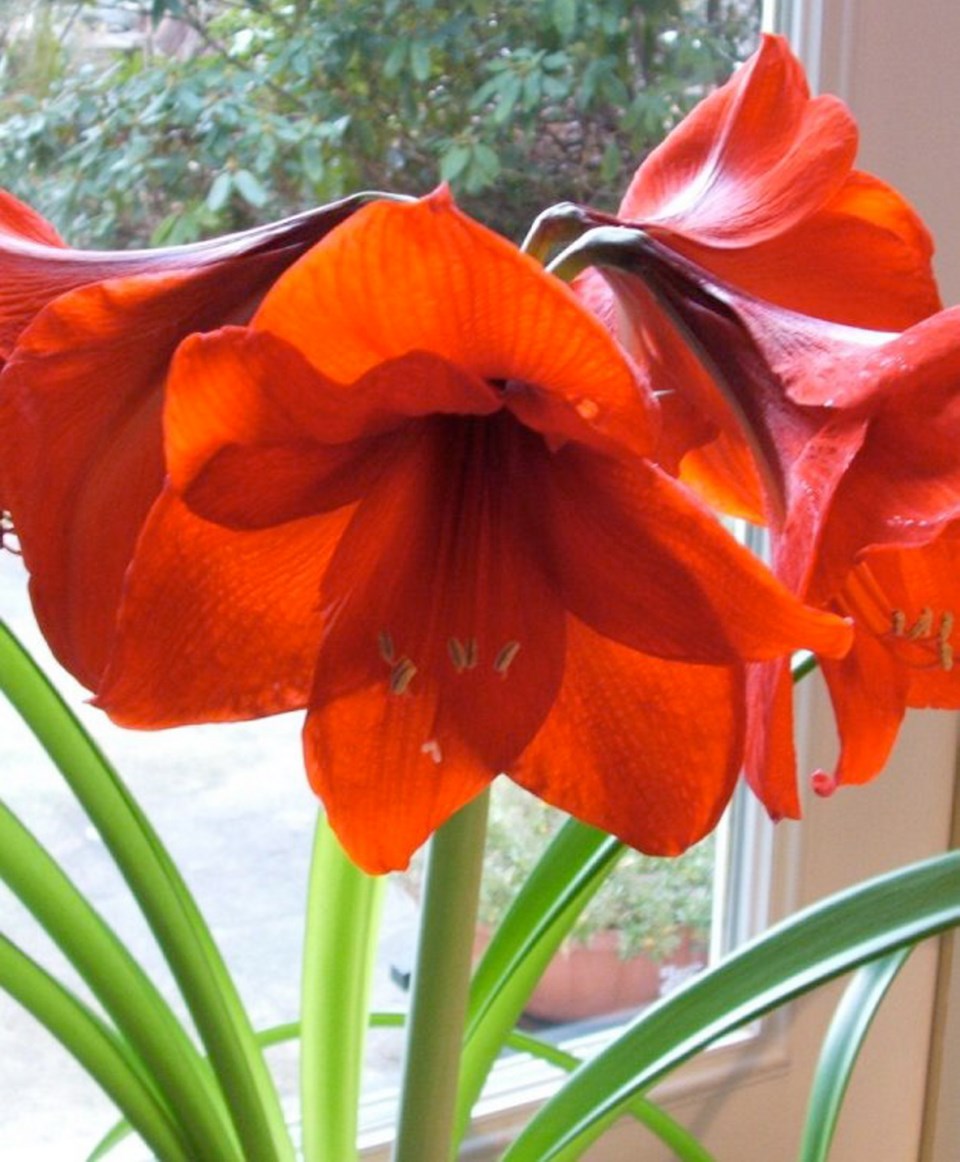Dear Helen: I marvelled at your account of a Red Lion amaryllis blooming several years in a row.
Here’s my story: In the spring, I moved a planter holding six Red Lion amaryllis bulbs outdoors. Over the summer, with regular watering and fertilzing, the planting developed a profusion of healthy leaves. I returned the pot indoors in October and waited for flowers that never appeared.
Curious, I removed the bulbs one by one. Each harboured a fat cutworm.
How could they have travelled over a huge expanse of cement patio, up three stairs and into a planter?
S.L.
Dear S.L.: Cutworms wouldn’t have to make the voyage you describe. The adult cutworm, a moth, lays eggs in late summer; the eggs hatch into grubs. But your invaders were not cutworms. The large, dirty white maggots in your amaryllis bulbs were narcissus bulb fly larvae.
The adult narcissus bulb fly is a large, hairy fly that looks much like a bumblebee. The flies emerge from pupation from mid-april to early May, when temperatures rise to around 20 C, and they remain until early summer.
Females lay eggs beside target bulbs and resulting larvae bore into the bulbs, feed there for the summer, reach full size by October and over-winter in the bulbs before emerging to pupate in March or April.
Though daffodils and narcissus are the flies’ most common targets, they will lay eggs also beside amaryllis, hyacinths, tulips and some other bulbs.
A summer outdoors does help potted amaryllis bulbs to replenish their energies and develop a new, embryonic flower bud; however, outdoor living does expose the plants to pests. Where a narcissus fly infestation has been a problem, covering the plants with floating row cover or insect netting from mid-April to July will exclude the flies and protect the bulbs. Or, keep the bulbs indoors until July.
Dear Helen: A Fremontia in my garden is one of my most prized plants for its summer-long production of large yellow flowers. Pruning the plant, however, is an uncomfortable experience because of the fine, irritating hairs that seem to drift from the plant. I recall your writing about Fremontia. Have you found a way to prevent or deal with this discomfort?
A.F.
Dear A.F.: The stems and leaves of Fremontia (Fremontodendron) bear irritant hairs that are impossible to avoid. Though minimal pruning is recommended for these beautiful evergreen shrubs, my plant becomes overgrown if I don’t keep it in check with regular pruning.
To address the itching problem I cover up completely, including the neck area, and don a broad-brimmed hat before tackling my Fremontia. That helps, but it does not eliminate the problem. Some of the fine hairs still manage to winkle their way under my clothing.
Thinking that perhaps the hairs would be less prickly in wet weather, I did some Fremontia pruning in late autumn last year. Defying the usual caution against hard pruning, I took out one entire trunk because of the tall shrub’s tendency to topple over in winter winds.
The hairs were still irritating, but this time I planned ahead and pruned the Fremontia at the end of the gardening day, just before taking myself and my clothing indoors for a good scrubbing. That’s one simple way of at least minimizing the discomfort.
The ideal time to prune Fremontia is around midsummer, following the plant’s first, glorious flush of flowers. Theoretically, shortening overlong stems at that time will keep a Fremontia in trim shape.
GARDEN EVENTS
Saltspring Helleborganza. Fraser’s Thimble Farm on Saltspring Island is celebrating Hellebor-ganza, its annual Hellebore festival, from Friday through to the end of March. This festival of winter blooming perennials will feature more than 225 varieties of hellebore along with many other winter bloomers including winter aconites and Japanese hepaticas. See thousands of plants in bloom. Nursery hours are 9 a.m. to 4:30 p.m. For photographs of the plants visit thimblefarms.com.
Seedy on Saltspring. Seedy Saturday: Sowing the Seeds of Love will be celebrated from 10 a.m. to 3 p.m., Feb. 14, in the Farmers’ Institute, 351 Rainbow Rd. on Saltspring island. The event will include a seed exchange, vendors, and presentations by authorities including Linda Gilkeson, who will speak about seed saving.



